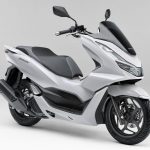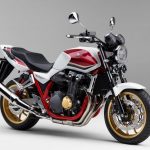Kawasaki is set to launch a new model in February next year, named after the Meguro, the big sport motorcycle of yesteryear. I took a look at the story behind the new MEGURO K3 at the recently opened Kawasaki Plaza Todoroki to find out what the motorcycle's aims are.
It was Japan's first large sport motorcycle manufacturer.
Meguro is known as one of Japan's oldest large sport motorcycle manufacturers. Why has it been revived after more than half a century, everyone must be wondering. To find the answer to this question, we must first look at the history of the company.
Meguro was once a motorcycle brand manufactured by Meguro Mfg. Meguro was founded in 1924 in the Taisho era. The company used to be located in Nishi-Gotanda in Shinagawa-ku, Tokyo, but no trace of it remains today. Initially, the company began manufacturing motorcycles based on the model of British motorcycles, but it wasn't long before it became Japan's first large sport motorcycle manufacturer, releasing one high-performance model after another. The high-quality, high-class Meguros were the darling of riders at the time.
Before the war, it was introduced as a motorcycle by the Metropolitan Police Department, and after the war, it continued to dominate the Asama Volcano Race, the predecessor to the All Japan Road Race Championship. Its performance and reliability were well known to the world.
The roots of the W1 and other modern Kawasaki motorcycles
During the post-war recession, Meguro's business performance gradually declined. The needs of the time had shifted to small-displacement practical motorcycles. As an aside, it is a famous story that the small motorcycle manufacturers that emerged after the war, mainly in Hamamatsu, were among the more than 50 companies that went on to dominate the world.
In 1960, Kawasaki entered into a business partnership with Meguro, which at the time was still an aircraft manufacturer (famous for its fighter masterpiece, the Hien, during World War II), and in the midst of its post-war search for a change in business, Kawasaki entered the motorcycle business.
Based on the flagship K1, which had already established itself as a domestic manufacturer of large sportbikes, Kawasaki released the Kawasaki Meguro K2 in 1964, which was completely redesigned with the latest aircraft technology.
Its successor, the Kawasaki 650W1 (a.k.a. "Dub One"), was a larger displacement model that would go down in history as one of Kawasaki's best-known motorcycles in 1966.
It's no exaggeration to say that Kawasaki's motorcycle division (Kawasaki Heavy Industries Motorcycle & Engine Company) has its roots in the Meguro. The Z1, GPZ900R, ZZR1100, and H2 were the fastest motorcycles in the world, and Kawasaki's six consecutive Superbike World Championship titles are proof of their strength. However, the path to the ZZ900R and H2 was born out of a miraculous encounter between the land champion Meguro and Kawasaki, which took to the skies 60 years ago.
Respect for the old powerhouse brand that built the foundation of today's Kawasaki
The actual MEGURO K3 that was unveiled at the launch was a retro-modern motorcycle with a mature and dignified appearance. The unique silver mirror paint job that gives off a subdued glow, and the three-dimensional emblems, each finished by hand by skilled craftsmen, conveyed a sense of warmth amidst the luxurious feel of the motorcycle.
Why is it Meguro now? We asked the Kawasaki representative once again a frank question, and he told us, "I want more people, especially the younger generation, to know that there was once a great motorcycle called the Meguro in Japan, and I want it to be passed on".
Kawasaki's modest annual sales target of 200 units should reflect the company's intentions in creating the K3. It is a legacy that laid the foundation of today's Kawasaki, and it is a reflection of respect for Japan's first large sport motorcycle manufacturer.
[From Japan]
See KAWASAKI Moto Index Page
See Accessories for KAWASAKI MEGURO Stamina K2










